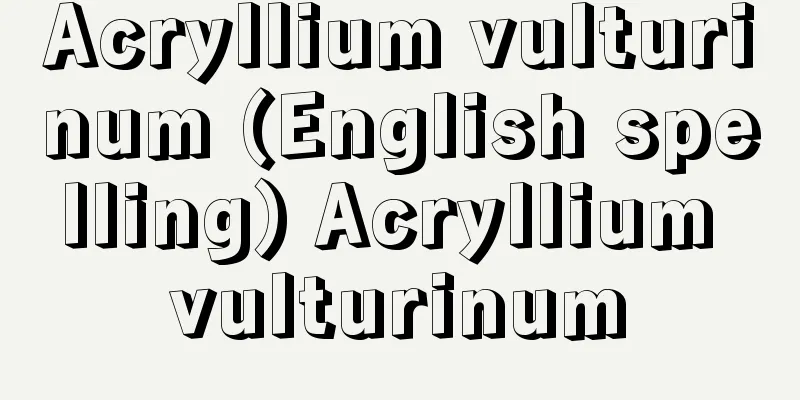Landscaping - Zoen

|
To interpret the term zoen literally as "creating a garden" and limiting it to the act of creating gardens and parks does not fit the current situation and is not landscaping. In the early Taisho period, "zoen" became established as a translation of "landscape gardening" and "landscape architecture," which were imported from the West. Here, we will focus on the concept of modern landscaping, or landscape architecture. [Shinji Isohachi] Definition and subjectIn the 1970s, the citizens' voices against pollution and the destruction of nature began to shift to calls for concrete responses through technical and practical measures such as greening factories and cities and nature conservation. In the 1980s, this developed into a broader trend towards creating landscapes and towns, including water-friendly movements, urban beauty, and the preservation of historical streetscapes. The ideas and techniques that support this kind of "town development with greenery and water" or "amenity town" are "landscape gardening," or landscape architecture. The significance of landscaping is to realize an environmental design that is desirable for humans as living organisms in modern urban society, where artificiality, standardization, and gigantism are progressing, resulting in an imbalance with nature, a loss of regionality, and a destruction of the human scale. In contrast to environmental planning centered on architecture and civil engineering, which covers everything with steel and concrete, landscaping creates an environment by conserving and utilizing land (topography), greenery (vegetation), water (aquatic systems), soil (farmland), space (open space), and scenery (landscape). Landscape gardening is a science, art, and technique that aims to create comfortable environments at the levels of landscape planning, site planning, and landscape design, by utilizing the effects of greenery while preserving the ecosystem of land and nature in order to satisfy the diverse needs and satisfactions of humans while promoting the harmonious coexistence of nature and man-made things. Specifically, most of the green spaces that are created or preserved for public use, from roadside trees and greenways, urban parks, preserved forests, green spaces, rural parks, historical parks, natural parks (national parks), zoological and botanical gardens, to sports parks and cemeteries, are the subject of modern landscape gardening. Private gardens, gardens in apartment complexes, greenery in factories, business establishments, and the exteriors of hotels and inns, as well as resorts, golf courses, tennis courts, and amusement parks, are also the subject of all tourist destination planning. In this case, there is a duality between landscape gardening based on scientific evidence, such as shade plantings in the median strip of a highway, and landscape gardening that pursues artistic merit, such as in art museums and public gardens. [Shinji Isohachi] Foundations and Development of Modern Landscape ArchitectureModern landscape gardening, or landscape architecture, began to be used in the 19th century. Frederick Law Olmsted (1822-1903), who won the design competition for New York's Central Park in 1858, called himself the first landscape architect, as he considered landscape gardening to be a new profession that covered a wider range than the English style of landscape gardening that had first emerged in the West since the early 18th century, which gradually connected the artificial landscaping around a house with the natural scenery outside to create a picturesque garden, and which dealt with nature scientifically and in a planned manner to address the state of society. From then on, greenery planners began to play an active role in everything from gardens and parks to garden cities, amusement parks, and natural parks. In Japan, the word was translated into Japanese as "keien" or "zoen" in the early Taisho period. Education and research in this field became popular after the Great Kanto Earthquake (1923), when the reconstruction plan called for the creation of nearly 60 new parks and green spaces. These parks, as well as Japan's first Western-style park, Hibiya Park (opened in 1903), have been the basis for the designs of parks currently used throughout the country. The history of Western gardens, which began in ancient Egypt, was based on a geometric style based on a symmetrical design with an axis running through the center, up until ancient Greece and Rome, Spain, Italy, and France. Fountains, pergolas (green corridors), sundials, flower beds, cascades (Italian), canals (French), sculptures, and other features in parks all make use of Western garden facilities. Gardens and gardening (creating gardens, landscaping, garden construction) are ancient and have a long history in both the East and the West, and are the origin and prehistory of modern landscaping. In them, we can find the goals, principles, and basics of landscaping design. Garden is a compound word of the Hebrew words gan (enclosure) and eden (joy, pleasure), and the Chinese characters tei (yard) refer to a place surrounded by buildings, and zoo (garden) refers to an area surrounded by fruit trees. In the primitive age, humans gained a safe space to live in by creating enclosures to protect themselves from enemies such as wild animals and other ethnic groups. Moreover, water, fruit trees, animals, plants, and other food were stored within the enclosures, and green shade was needed to protect people from the hot sun. Places where these conditions were met were heavens filled with joy and happiness. The etymology of gardens and gardens indicates safe and comfortable environmental conditions, and concrete design images are depicted in the Garden of Eden and Egyptian gardens, which are the prototypes of Western gardens. Just as the ideal of Eastern gardens is the Pure Land. This is also the reason why Japanese gardens have been known to claim to be Pure Land gardens, such as Mount Sumeru, Horai, and Tsurukame gardens. Even as the era changed from gardens to parks, the goal of landscaping has always been to create safe, comfortable spaces filled with greenery and water, and to create an ideal world on earth like the Garden of Eden or the Pure Land. There are five key points for an ideal landscape design: functionality in terms of use, aesthetics such as beauty, conservation of the natural ecosystem through minimum greenery, sociality in response to modern demands, and spirituality such as providing inspiration and a nostalgic landscape. [Shinji Isohachi] "Landscape Architecture" by J.O. Simons, translated by Kubo Sadashi et al. (1967, Kajima Publishing Co.)" ▽ "Creating the Environment" edited by the Japanese Institute of Landscape Architecture (1985, Japan Broadcasting Publishing Association) " ▽ "Amenity Design, Creating True Environments" by Shinji Isohachi (1992, Gakugei Publishing Co.) [References] | | |Source: Shogakukan Encyclopedia Nipponica About Encyclopedia Nipponica Information | Legend |
|
造園という用語を文字どおり「園を造る」と解釈して、庭園や公園をつくる行為に限定するのは、現在の実情にあわないし、造園学的ではない。大正初期、欧米から移入された「ランドスケープ・ガードゥニング」や「ランドスケープ・アーキテクチュア」の翻訳として「造園」が定着していったのである。ここでは近代造園学すなわちランドスケープ・アーキテクチュアの概念を中心に展開する。 [進士五十八] 定義・対象1970年代に入ると、それまでの公害反対、自然破壊反対という市民の声は、工場緑化や都市緑化、自然保護といった技術的・実践的施策による具体的対応を迫るようになった。これが80年代に入ると、親水運動や都市美、歴史的町並みの保全など広範な風景づくり・町づくり気運へと展開するようになった。このような「緑と水の町づくり」あるいは「アメニティ・タウン」を支える思想や技術が、「造園」すなわち「ランドスケープ・アーキテクチュア」landscape architectureである。 造園の意義は、人工化、画一化、巨大化が進み、自然とのアンバランス、地域性の喪失、ヒューマン・スケールの破壊がおこっている現代都市社会で、生物としての人間にとって望ましい環境デザインを実現することにある。鉄やコンクリートで覆ってしまう建築や土木本位の環境計画に対して、土地(地形)、緑(植生)、水(水系)、土(農地)、空間(オープン・スペース)、景観(ランドスケープ)などの保全と活用によって環境を創造するのである。 造園は、自然と人工の調和共存を図りながら、人間の多様な要求と満足を満たすために、土地・自然の生態系を保全しつつ、緑の効果を発揮して、住環境、都市環境、田園環境、自然環境など各種環境に対して、景観計画landscape planning、敷地計画site planning、造園設計landscape designの各レベルで、快適環境を創造する科学であり、芸術であり、技術である。具体的には、街路樹や緑道、都市公園、保存林、緑地、田園公園、歴史公園、自然公園(国立公園)、動植物園などから運動公園や墓園に至るまで、公共的に造成されたり保全される緑の空間のほとんどが現代造園の対象である。民間の個人庭園や集合住宅の庭園、工場の緑化や事業所、ホテル・旅館の外構(がいこう)、さらにはリゾート、ゴルフ場、テニスコート、遊園地に至るまで、観光地計画のすべても造園の対象である。この場合、高速道路の中央分離帯の遮光植栽のように科学的根拠を基本に置く造園と、美術館や公開庭園のように芸術性を追求する造園の二面性がみられる。 [進士五十八] 現代造園の基礎と発展現代の造園すなわちランドスケープ・アーキテクチュアが使われるのは、19世紀に入ってからである。アメリカでニューヨークのセントラル・パークの懸賞設計(1858)に当選したオルムステッドFrederick Law Olmsted(1822―1903)は、18世紀初め以後西洋で初めて生まれたイギリス風景式造園すなわちランドスケープ・ガードゥニングlandscape gardening(風致造園=邸館周囲の人工的な造園がしだいに外部の自然風景と連続させられて絵のような庭園をつくる方法)よりも広範囲をカバーし、しかも科学的に自然を扱い社会のあり方にも計画的に対処する新しい職能として、自らランドスケープ・アーキテクト(造園家)第一号を名のった。以後、庭園や公園はもちろん、田園都市、遊園地から自然公園までに一貫して携わる緑の計画家の活躍が始まる。日本では大正初期、この語を翻訳して「景園」とか「造園」とよんだ。教育研究が盛んになるのは、関東大震災(1923)後の震災復興計画で、一挙に60か所近い公園緑地を新設することになったからである。これらの公園はもとより、日本初の洋風公園である日比谷(ひびや)公園(1903開園)以来、現在全国で用いられている公園意匠の原形は西洋庭園にある。古代エジプトに始まる西洋庭園史は、古代ギリシア・ローマ、スペイン式、イタリア式、フランス式までは、中心に軸線を通した左右対称型デザインを基本とした幾何学式の様式であった。公園に施設される噴水、パーゴラ(緑廊)pergola(ラテン語)、日時計、花壇、カスケード(階段滝)cascade(イタリア語)、カナル(運河状池泉)canal(フランス語)、彫刻などは、みな西洋庭園施設を利用したものである。庭園、ガードゥニングgardening(作庭、造庭、庭造)は洋の東西を問わず古く、長い歴史をもち、現代造園の源流・前史をなすもので、そこに、造園の目標、原理、造園設計の基本をみいだすことができる。gardenはヘブライ語のgan(囲い)とeden(楽しみ、喜び)の合成語であり、漢字の庭(てい)は建物で囲まれた場所、園は果樹を囲った姿である。原始、人間は、野獣や他民族など敵から守るために、囲いをつくることで安全に暮らせる空間を得た。しかもその中には水、果樹、動植物などの食糧が蓄えられ、暑い日差しから身を守る緑陰が必要であった。これらの条件が満たされた場所は楽しく喜びあふれた天国であった。ガーデンや庭園の語源には、安全で快適な環境条件が示されているし、西洋庭園の原型であるエデンの園やエジプトの庭園には、具体的なデザインイメージが描かれている。東洋庭園の理想が極楽浄土であるのと同様である。また、日本庭園が浄土の庭、須弥山(しゅみせん)・蓬莱(ほうらい)・鶴亀(つるかめ)の庭などを標榜(ひょうぼう)してきた理由もここにある。庭園から公園の時代に変わっても、造園は緑と水のある安全で快適で、エデンの園や浄土のような理想世界を地上に実現することを目標にしてきたのである。 理想的造園設計のポイントは、五つある。すなわち、利用上の機能性、美しさなどの美観性、グリーンミニマムなど自然生態系の保全性、時代的要求などへの社会性、感動や原風景性の付与などの精神性、の以上五つの側面のすべてを満たすことである。 [進士五十八] 『J・O・サイモンズ著、久保貞他訳『ランドスケープ・アーキテクチュア』(1967・鹿島出版会)』▽『日本造園学会編『環境を創造する』(1985・日本放送出版協会)』▽『進士五十八著『アメニティ・デザイン、ほんとうの環境づくり』(1992・学芸出版社)』 [参照項目] | | |出典 小学館 日本大百科全書(ニッポニカ)日本大百科全書(ニッポニカ)について 情報 | 凡例 |
<<: Landscaping plants - Zoenshokubutsu
Recommend
Eye Bank
An institution that provides corneas for transplan...
Kugoe
...A river where public fishing was prohibited fo...
Kamiyagawa River
A river that flows south through the western part...
Contact inhibition
...A monolayer culture is when cells adhere to th...
Aponeurosis
...As mentioned earlier, the ciliary muscle in th...
Keisei Yamato Soushi
Kabuki Kyogen. Historical piece. Six acts. Written...
Paper and pulp industry wastewater
...(1) Organic wastewater with relatively high co...
stenotype
… In addition to this method of writing lines (li...
Fish Market - Uoichi
〘 noun 〙 A market where fish, salt mixtures, etc. ...
Skin diving - skin diving
This is a form of sport diving where you hold you...
Tracheid - English spelling: tracheid
A type of cell in the xylem of vascular plants th...
Chrysanthemum stone
One of the most well-known floral stones. It is f...
Chelate effect - Chelate effect
The stability of chelate complexes formed by polyd...
Abekawa Mochi - Abekawa Mochi
Kinako mochi (roasted soybean flour rice cakes) a...
Mata-Hide - Yuin
A teahouse in the Urasenke school of Kyoto. It is...





![Shime [town] - Shime](/upload/images/67cbcaff351f7.webp)



